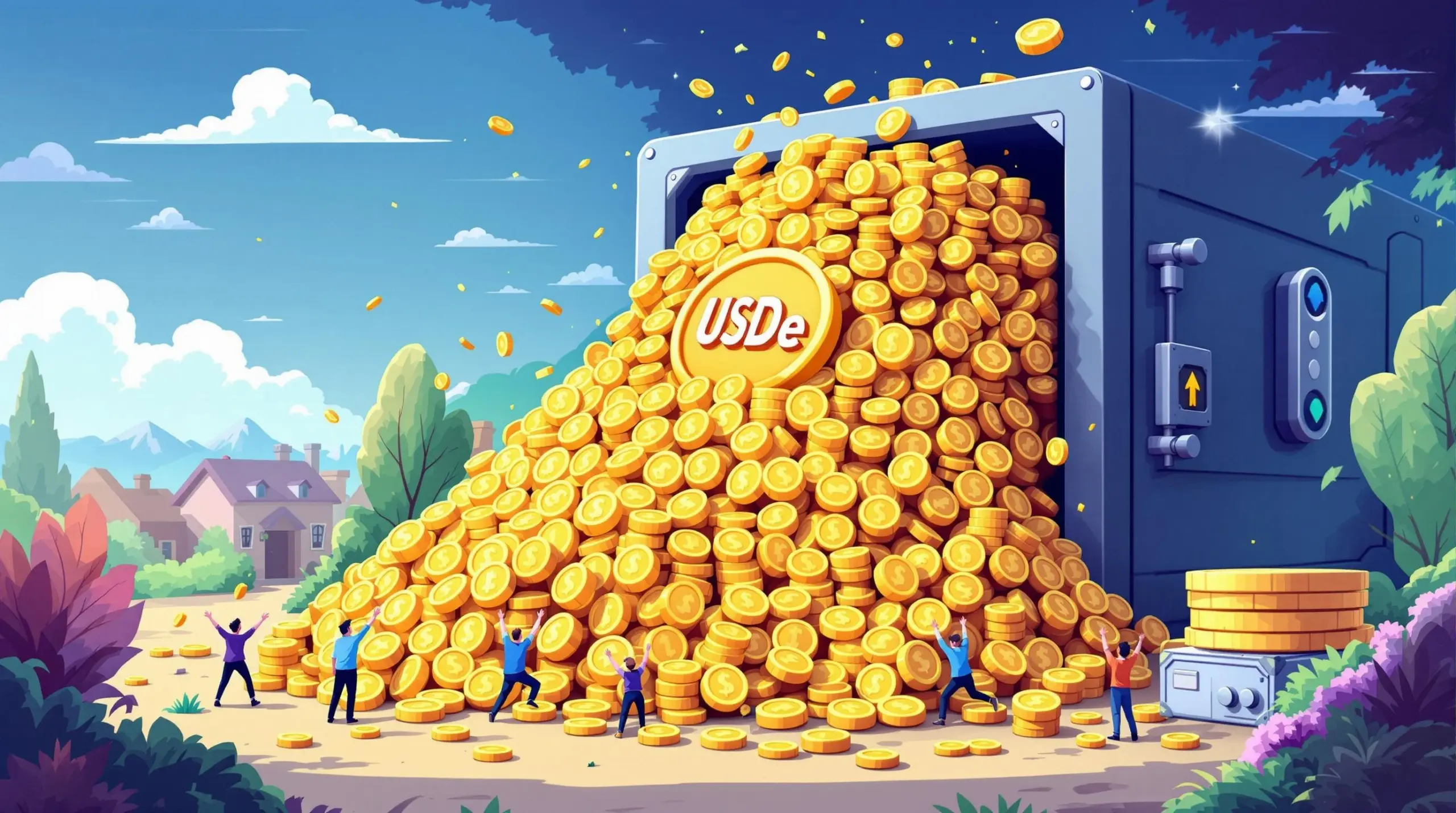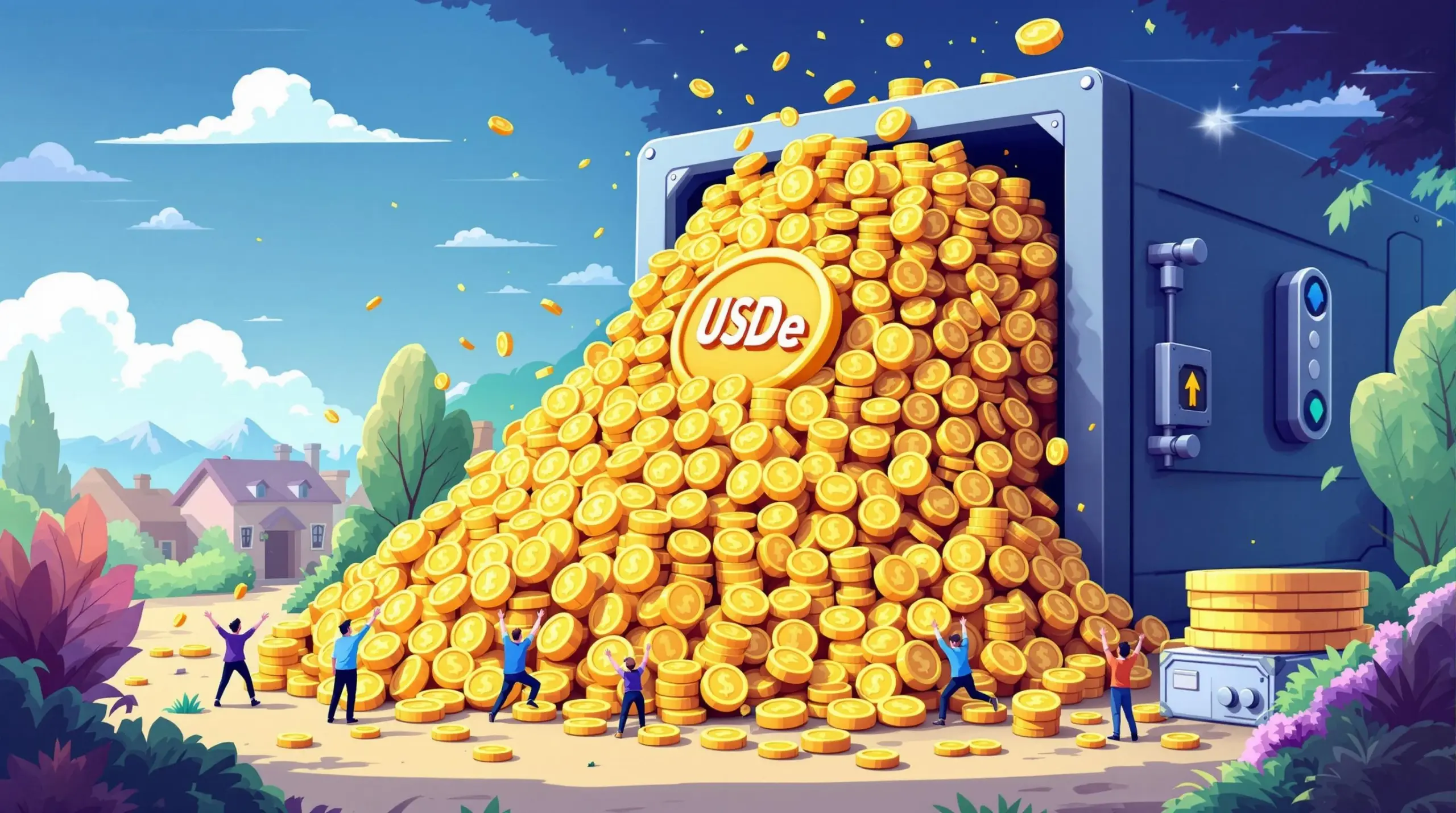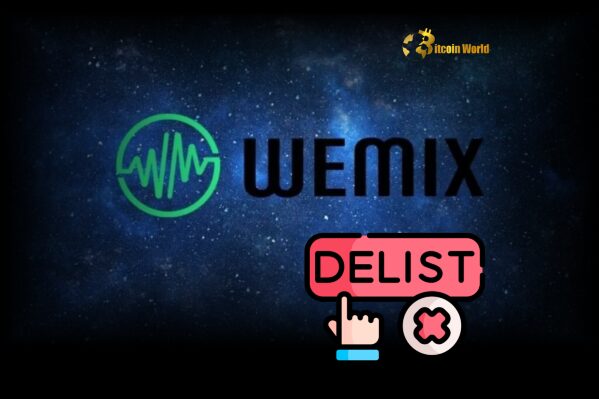BitcoinWorld

Ethena USDe’s Phenomenal Rise: Hitting a Staggering $6.12 Billion Supply
The cryptocurrency world is buzzing with a significant milestone: Ethena USDe, the synthetic dollar protocol, has seen its supply soar to an astonishing record of $6.12 billion. This remarkable achievement, as highlighted by Unfolded on X, underscores a growing confidence and adoption of innovative stablecoin solutions within the decentralized finance (DeFi) ecosystem. For anyone tracking the evolution of digital assets, this surge in Ethena USDe supply is a compelling indicator of its expanding footprint and potential impact on the broader financial landscape.
What is Ethena USDe and Why is its Growth Remarkable?
Ethena USDe is not just another stablecoin; it’s a synthetic dollar protocol built on Ethereum, designed to maintain a stable peg to the US dollar while also generating yield. Unlike traditional stablecoins backed by fiat reserves, Ethena USDe achieves its stability through a delta-hedging strategy involving staked Ethereum (stETH) and corresponding short perpetual futures positions. The recent surge to $6.12 billion in supply signifies rapid market acceptance and liquidity, making it one of the fastest-growing assets in the stablecoin sector.
This growth is remarkable for several reasons:
- Innovative Mechanism: It offers a novel approach to stablecoin design, moving beyond simple fiat-backed or crypto-collateralized models.
- Yield Generation: Its ability to generate a competitive yield through its “Internet Bond” concept has attracted significant capital.
- Market Demand: The rapid increase in supply indicates a strong demand from users seeking both stability and yield in a volatile market.
To put Ethena USDe into perspective, let’s compare it with some well-known stablecoins:
| Feature | Ethena USDe | USDT (Tether) | USDC (Circle) |
|---|---|---|---|
| Collateral Type | Staked ETH, short perpetual futures | Fiat reserves, commercial paper, etc. | Fiat reserves, cash equivalents |
| Yield Generation | Yes (from staking & funding rates) | No (typically) | No (typically) |
| Decentralization Focus | High (on-chain operations) | Centralized issuer | Centralized issuer |
| Risk Profile | Funding rate volatility, smart contract, execution | Counterparty, regulatory, audit | Counterparty, regulatory, audit |
How Does Ethena USDe Generate its Attractive Yield?
The allure of Ethena USDe largely stems from its unique yield-generating mechanism, often referred to as the “Internet Bond.” This innovative approach combines two primary sources of yield:
- Staked Ethereum (stETH) Rewards: Ethena utilizes staked Ethereum as part of its collateral. The native yield generated from staking ETH on the Ethereum blockchain is a foundational component of USDe’s yield.
- Funding Rates from Delta-Hedging: To maintain its dollar peg, Ethena takes short positions in ETH perpetual futures markets. In bull markets, funding rates for these short positions are often positive, meaning short sellers receive payments from long holders. This positive funding rate contributes significantly to the overall yield of Ethena USDe.
This dual-pronged strategy aims to provide a robust and diversified yield stream. However, it’s crucial to understand that while attractive, this yield is not without its nuances. Funding rates can fluctuate and even turn negative during bear markets, potentially impacting the yield. Furthermore, the reliance on smart contracts and various DeFi protocols introduces inherent technical risks that users should consider.
The StablecoinX Merger: A New Era for Ethena USDe on Nasdaq?
Adding another layer of intrigue to the Ethena USDe narrative is the recent announcement regarding TLGY Acquisition Corp. (a special purpose acquisition company or SPAC) and its merger deal. This deal, coupled with $360 million in PIPE (Private Investment in Public Equity) financing, aims to launch a new entity called StablecoinX. The ambitious goal for StablecoinX is to become a stablecoin-focused treasury company and to list on Nasdaq under the ticker USDE.
What does this mean for Ethena USDe and the broader stablecoin market?
- Bridging DeFi and TradFi: A Nasdaq listing would represent a significant step in bridging the gap between decentralized finance and traditional financial markets. It could bring a new level of institutional visibility and potentially broader adoption for stablecoin-related products.
- Increased Transparency and Regulatory Scrutiny: Listing on a major exchange like Nasdaq would likely subject StablecoinX and its underlying assets to increased regulatory oversight and transparency requirements, which could enhance trust for some investors.
- Potential for New Capital Inflows: A public listing could open doors to a wider pool of investors, including traditional institutional funds that might otherwise be hesitant to engage directly with DeFi protocols.
While the direct connection between Ethena’s existing USDe and the future StablecoinX ticker USDE needs to be carefully clarified as the deal progresses, the broader sentiment indicates a growing interest in bringing stablecoin infrastructure into regulated, publicly traded frameworks. This development highlights the increasing maturity and mainstream ambition of the stablecoin sector, potentially paving the way for more integrated financial products centered around assets like Ethena USDe.
What Are the Benefits and Potential Challenges for Ethena USDe’s Future?
The journey of Ethena USDe, like any pioneering financial innovation, comes with a set of compelling benefits and inherent challenges that warrant close examination.
Benefits:
- Scalability and Capital Efficiency: By leveraging liquid staked ETH and derivatives, Ethena aims for a highly scalable stablecoin solution that can grow without being solely reliant on traditional bank reserves. This capital efficiency is a significant advantage in the digital asset space.
- Attractive Yield Potential: For many users, the primary draw of Ethena USDe is its ability to offer a yield that often surpasses those available in traditional finance, making it an appealing option for capital deployment in DeFi.
- Innovation in DeFi: Ethena represents a cutting-edge approach to stablecoin design, pushing the boundaries of what’s possible in decentralized finance and potentially inspiring further innovation in the sector.
- Potential for Institutional Adoption: As the protocol matures and if entities like StablecoinX succeed in their Nasdaq listing, it could pave the way for greater institutional interest and integration of synthetic dollar products into traditional portfolios.
Challenges:
- Regulatory Scrutiny: Stablecoins, especially those with novel mechanisms like Ethena USDe, are under increasing scrutiny from global regulators. Future regulations could impact its operational model or growth trajectory.
- Systemic Risk Concerns: Critics have raised questions about the potential for systemic risk if the protocol were to face extreme market conditions, particularly regarding the stability of funding rates or large liquidations.
- Sustained Yield Generation: The yield derived from funding rates can be volatile. Maintaining consistently high and attractive yields over long periods, especially during prolonged bear markets, remains a significant challenge.
- Smart Contract and Oracle Risks: Like all DeFi protocols, Ethena is exposed to smart contract vulnerabilities and the reliability of external data feeds (oracles) for pricing and execution.
- Competition: The stablecoin market is highly competitive, with established giants and new entrants constantly vying for market share. Ethena must continuously innovate to maintain its edge.
Actionable Insights and The Evolving Stablecoin Landscape
The impressive growth of Ethena USDe signals a pivotal moment for stablecoins. For users and investors, it highlights the increasing sophistication of DeFi products that offer both stability and yield. However, it also underscores the importance of due diligence, understanding the underlying mechanisms, and being aware of the associated risks, particularly those tied to funding rate volatility and smart contract security.
The potential Nasdaq listing of StablecoinX further illustrates a broader trend: the convergence of decentralized finance with traditional capital markets. This hybridization could unlock new avenues for liquidity and adoption, but it also means navigating complex regulatory frameworks. The future of stablecoins will likely involve a blend of innovative DeFi native solutions like Ethena USDe and more regulated, institutionally accessible products, creating a diverse and dynamic ecosystem.
In conclusion, Ethena USDe‘s surge to $6.12 billion is more than just a number; it’s a testament to the relentless innovation within the crypto space. It showcases the market’s appetite for stable assets that also offer compelling returns, even as it navigates the inherent complexities and emerging regulatory landscapes. Its trajectory, intertwined with developments like the StablecoinX merger, positions it as a key player to watch in the evolving narrative of digital finance.
Frequently Asked Questions (FAQs)
Q1: What exactly is Ethena USDe?
A1: Ethena USDe is a synthetic dollar protocol on Ethereum that aims to maintain a stable peg to the US dollar. It achieves this stability and generates yield through a delta-hedging strategy, combining staked Ethereum (stETH) with short perpetual futures positions.
Q2: How does Ethena USDe generate yield for its holders?
A2: Ethena USDe generates yield from two primary sources: the native staking rewards from staked Ethereum (stETH) and the positive funding rates received from its short perpetual futures positions, especially during bullish market conditions.
Q3: What are the main risks associated with Ethena USDe?
A3: Key risks include the volatility of funding rates (which can turn negative), smart contract vulnerabilities, execution risks, and potential regulatory changes impacting synthetic stablecoins. Users should understand these before engaging with the protocol.
Q4: What is the significance of the StablecoinX merger for Ethena USDe?
A4: The merger involving TLGY Acquisition Corp. to form StablecoinX, aiming for a Nasdaq listing, signals a move to bring stablecoin-focused treasury operations into traditional public markets. While the direct operational link to Ethena’s USDe needs clarification, it highlights a broader trend of bridging DeFi innovation with institutional finance and could potentially open new avenues for adoption and capital for stablecoin-related entities.
Q5: How does Ethena USDe differ from traditional stablecoins like USDT or USDC?
A5: Unlike USDT or USDC, which are primarily backed by fiat reserves or cash equivalents held by centralized entities, Ethena USDe is a decentralized, synthetic dollar. It uses crypto-native collateral (stETH) and derivatives strategies to maintain its peg and generate yield, offering a different risk and reward profile.
Q6: Is Ethena USDe considered a decentralized stablecoin?
A6: Yes, Ethena USDe is designed as a decentralized synthetic dollar, leveraging on-chain mechanisms for its stability and yield generation, distinguishing it from centralized, fiat-backed stablecoins.
If you found this article insightful, please consider sharing it with your network! Your support helps us continue to deliver valuable content on the dynamic world of cryptocurrencies.
To learn more about the latest crypto market trends, explore our article on key developments shaping stablecoin price action.
This post Ethena USDe’s Phenomenal Rise: Hitting a Staggering $6.12 Billion Supply first appeared on BitcoinWorld and is written by Editorial Team





